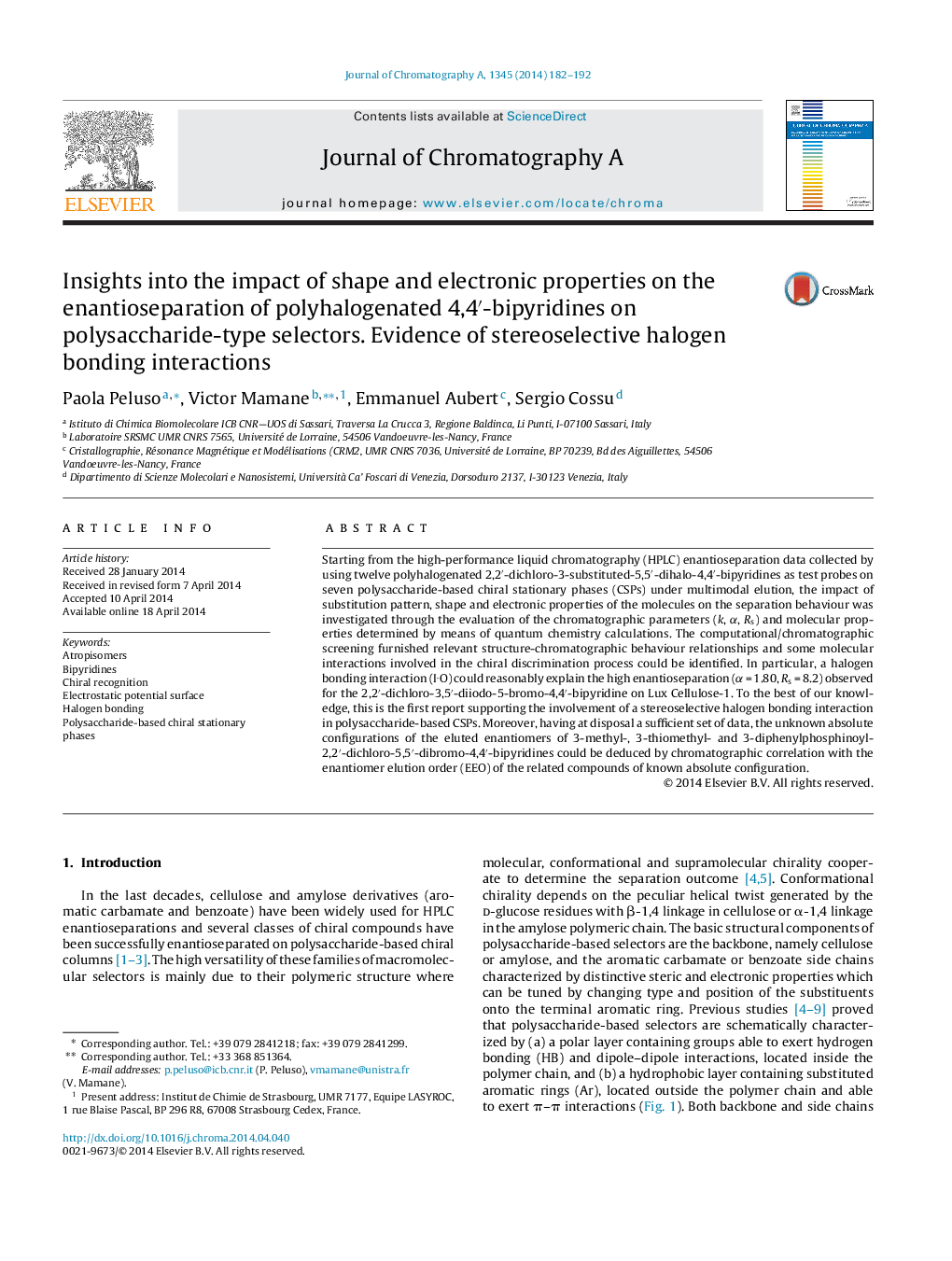| Article ID | Journal | Published Year | Pages | File Type |
|---|---|---|---|---|
| 1199531 | Journal of Chromatography A | 2014 | 11 Pages |
•Molecular interactions determining retention and enantioselectivity are examined.•Halogen bonding interactions can play a key role in chiral recognition.•Unknown absolute configurations can be predicted by chromatographic correlation.
Starting from the high-performance liquid chromatography (HPLC) enantioseparation data collected by using twelve polyhalogenated 2,2′-dichloro-3-substituted-5,5′-dihalo-4,4′-bipyridines as test probes on seven polysaccharide-based chiral stationary phases (CSPs) under multimodal elution, the impact of substitution pattern, shape and electronic properties of the molecules on the separation behaviour was investigated through the evaluation of the chromatographic parameters (k, α, Rs) and molecular properties determined by means of quantum chemistry calculations. The computational/chromatographic screening furnished relevant structure-chromatographic behaviour relationships and some molecular interactions involved in the chiral discrimination process could be identified. In particular, a halogen bonding interaction (I.O) could reasonably explain the high enantioseparation (α = 1.80, Rs = 8.2) observed for the 2,2′-dichloro-3,5′-diiodo-5-bromo-4,4′-bipyridine on Lux Cellulose-1. To the best of our knowledge, this is the first report supporting the involvement of a stereoselective halogen bonding interaction in polysaccharide-based CSPs. Moreover, having at disposal a sufficient set of data, the unknown absolute configurations of the eluted enantiomers of 3-methyl-, 3-thiomethyl- and 3-diphenylphosphinoyl-2,2′-dichloro-5,5′-dibromo-4,4′-bipyridines could be deduced by chromatographic correlation with the enantiomer elution order (EEO) of the related compounds of known absolute configuration.
